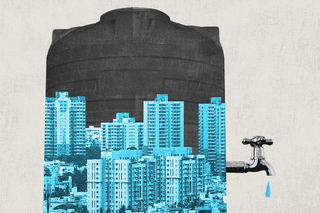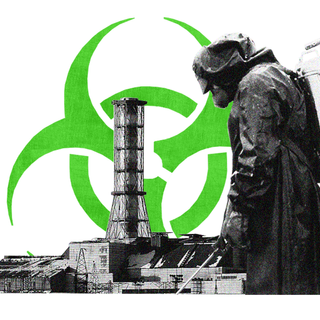
Urban Development Is Contributing to Water Scarcity in Bengaluru, Finds Report
“The restoration of the existing community-managed water tanks network offers a more sustainable and socially just alternative for managing water resources.”

We know climate change threatens human survival in catastrophic ways. This makes it all the more important to ensure we don’t somehow catalyze the process through non-climactic factors — that’s the lesson a new global report has for the city of Bengaluru in Karnataka.
According to a new, rather concerning report, water scarcity in Bengaluru is currently being amplified by widescale urban development. Infrastructural “advancements” have threatened water tanks that were traditionally managed by communities. Along with human-induced climate change, this dynamic can result in water scarcity across the state.
The IPCC Working Group II report on Climate Change 2022: Impacts, Adaptation, and Vulnerability, which was released this week, highlighted how different parts of Asia are dealing with water stress due to both climatic and non-climatic factors — like population density, and urban planning and infrastructure. The latter is turning out to be responsible for contributing to Bengaluru’s water scarcity, the report notes.
The global report holds important lessons about how we can avoid catalyzing this process through non-climactic factors. In the city of Bengaluru, water insecurity is already dire. In 2018, NITI Aayog, a government think-tank, had forecasted that Bengaluru will run out of groundwater by 2020; it hasn’t happened yet, but the alarm bells continue to ring.
Related on The Swaddle:
Hundreds of Fish Died in a Bengaluru Lake Due to Industrial Waste
Reportedly, at present, in non-core areas of the city that do not receive water from the river Cauvery, there are a total of 9,294 borewells — of which, 1,793 already don’t work due to scarcity of water. This presents a rather grim picture of what might follow if monsoons cease to be kind to the Cauvery and people are forced to rely on groundwater. Bengaluru “depends on long-distance water transfers [from the Cauvery river] that create political conflict and a dense network of private boreholes that are depleting the city’s water resources,” the report noted.
The city has begun to feel the impact of water scarcity. In February 2020, The Hindu reported that more than one lakh apartments in the city are lying vacant — with people hesitant to move into them due to the looming problem of water scarcity that might arise.
Like most non-renewable resources, it was human negligence — and lack of foresight — that has led to this crisis, experts note. According to Hita Unnikrishnan, a post-doctoral research associate at Azim Premji University whose research was quoted by the IPCC report, “…we resorted to drawing water from the Cauvery, and that is the core problem. We learned to source water from far away and neglected the water we can conserve within the city.”
IPCC’s report, too, highlights precisely a myopic and exploitative view of development. “Ideas of modernist planning influenced the development of new water infrastructure and piped networks, including the first piped infrastructure, bringing water from sources 30 kilometers away… [while] the old network of tanks gradually deteriorated as tanks became disused, polluted, or built over,” it states.
Related on The Swaddle:
India Has No Urban Drought Policy, Leaving Cities Unprepared, Vulnerable
In other words, instead of bolstering traditional systems of conservation, the focus on tapping piped networks has taken a toll.
Urban development made the city steer towards options that weren’t as valuable in the long term while allowing more sustainable, already existing options to wither away. However, “better late than never” appears to be the motto IPCC’s solution offers. “The restoration of the existing community-managed water tanks network offers a more sustainable and socially just alternative for managing water resources.”
Evidently, the contribution of urban development to Bengaluru’s water scarcity is something experts have been warning about for a while. Perhaps, the IPCC highlighting it will finally get authorities to take concrete steps to address the problem before the city runs out of water.
“What we don’t realize is that we’re fortunate not to have experienced a shortage in rainfall over the years. Because if the Cauvery misses a single monsoon, Bengaluru will run out of water within the next six months and that’s the reality… people need to be aware that the groundwater in the city is indeed becoming more scarce and have to start acting on it,” Kshithij Urs, former executive director of the Greenpeace India, had told The Better India.
Devrupa Rakshit is an Associate Editor at The Swaddle. She is a lawyer by education, a poet by accident, a painter by shaukh, and autistic by birth. You can find her on Instagram @devruparakshit.
Related


5,300‑Year‑Old Skull Reveals Evidence of Prehistoric Ear Surgery
